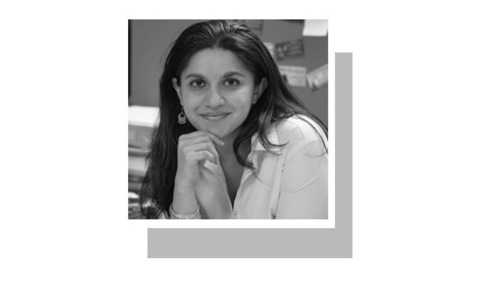
QUETTA: Around half a dozen customers sit patiently waiting to be served lunch at the Pakistan Chaat Point, on Faiz Mohammad Road in Quetta, when a boy with a dusky complexion hobbles up to the tables holding up a jug of water and steel glasses. One of the customers, a doctor by profession, pipes up: “You suffer from thalassaemia, don’t you?”
The boy smiles. “My father takes me to the Thalassaemia Care City Centre once every two weeks, where doctors give me regular shots and blood transfusions.”
The Thalassaemia centre here opened a few years ago and it looks clean and well-equipped. Around two dozen children wait for their turn to get a transfusion, while nurses and doctors mill around, attending to patients. Many of the young patients here belong to various districts outside Quetta — Mastung, Pishin, Kalat, etc — and their parents complain about how there isn’t a single centre for thalassaemia patients in their area.
There are reports of children living in remote villages and towns of Balochistan, who die without receiving treatment for thalassaemia because they have never been diagnosed with it.
Razzaque Siapad, who hails from a village in Kharan district, did not know that his children had died from the disease. “We thought that they were killed by djinns, and we recently found out that they were suffering from a disease — thalassaemia.”
But Siapad, a small-scale farmer, asks the pertinent question: “For how long will I be able to bring him to Quetta regularly... I barely make a living for my family.”
Other parents share similar heartbreaking stories. Mohammad Waris Langove, 50, hails from Kirdagap, Mastung. A patient of hepatitis C, Langove has been bringing his son Furqan, 10, to the centre in Quetta for blood transfusions since he was three months old. “I do not know what to do to myself. I am suffering from jaundice, but my son, on the other hand, is suffering from thalassaemia. Because of his disease, I cannot take out time to get treatment for myself,” he says.
For some in Quetta, the battle with thalassaemia is no less than a constant nightmare.
Habibullah, a Pashtun who works as a mechanic, lives on Sabzal Road. He has lost three of his brothers to the disease and his father, a cleric of the local mosque, is suffering from cancer.
He shares that after two of his brothers had died of thalassaemia, his father lost hope and refused to treat the third brother. “My father said he would not treat the third brother, so he let him die... [My brother’s] spleen soon enlarged, which resulted in swelling of his whole belly. He died tragically after seven months of the scourge. My father did not even consult a doctor!”
Following the death of the third son, the father decided to take Habibullah, now 27, and Khuda Nazar, 13, to the Thalassaemia centre. Their brother Najeebullah says, “I earn Rs14,000 every month and use my meagre salary to pay for household expenditures, for my father’s cancer treatment and for the treatment of my two brothers suffering from thalassaemia.”
The scant facilities available to thalassaemia patients in the province do not perturb most health officials. In fact, Health Minister Rehmat Saleh Baloch insists: “Our support [to thalassaemia patients] continues at the provincial and district levels. There are cases of thalassaemia patients in Gwadar district, which is why we built a thalassaemia centre there.”
He adds, “We will increase the capacity of hospitals situated in remote parts of Balochistan to treat thalassaemia patients.”
Professor Dr Nadeem Samad Sheikh, who heads the Thalassaemia Care City Centre, explains: “This genetic disorder is mostly caused by marriages within families. For instance, when two cousins suffering from thalassaemia minor marry each other, the condition — thalassaemia major — is passed on to their children. Thalassaemia minor is also a disease which one does not generally come to know about because its symptom is mild anaemia, but in children who have thalassaemia major, there is a lack of blood-forming potentials. There are around 30 mutations of thalassaemia major in this region.”
The 30 kinds of mutations require 30 different treatments. Sometimes, it is the parents’ negligence that condemns children to aggravated symptoms. Many children at the Thalassaemia centre had enlarged spleens, livers, and even hearts. Dr Samad says many of the children’s lives are at risk because of their own parents because, “they stop giving them their medicines without asking us”.
At present, there are 1,735 cases of thalassaemia major registered in Quetta. There are two thalassaemia centres in the district — at Quetta’s Civil Hospital and at the Bolan Medical Complex. “Around 60 children are given blood at the two centres daily,” he says.
According to Dr Samad, there is 8.1 per cent prevalence of thalassaemia among the Baloch population, and is 5.6pc among the Pashtun. He adds that the prevalence of thalassaemia is generally very high in Southeast Asia.
Urooj Ali was diagnosed with thalassaemia when she was nine months old, but she never gave up, and neither did her parents. “My father is a senior professor at a college and he stood by me and educated me. Now I am doing an MPhil,” she says. “I give lectures at my varsity and attend seminars on thalassaemia in order to raise awareness among students about thalassaemia, so that everyone gets tested before marriage.”
Published in Dawn, October 12th, 2017














































